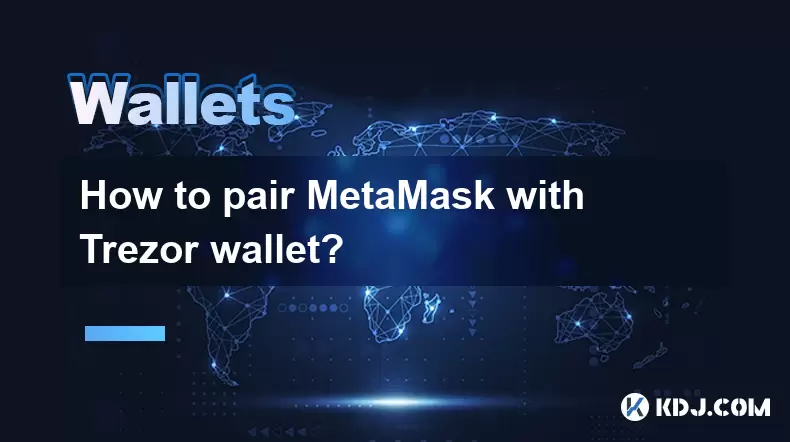-
 Bitcoin
Bitcoin $114400
1.32% -
 Ethereum
Ethereum $3499
2.20% -
 XRP
XRP $2.922
4.26% -
 Tether USDt
Tether USDt $0.0000
0.03% -
 BNB
BNB $752.6
1.53% -
 Solana
Solana $161.8
1.64% -
 USDC
USDC $0.9999
0.01% -
 TRON
TRON $0.3267
1.32% -
 Dogecoin
Dogecoin $0.1991
3.02% -
 Cardano
Cardano $0.7251
3.29% -
 Hyperliquid
Hyperliquid $38.32
3.36% -
 Stellar
Stellar $0.3972
7.58% -
 Sui
Sui $3.437
2.74% -
 Chainlink
Chainlink $16.29
3.65% -
 Bitcoin Cash
Bitcoin Cash $545.3
3.70% -
 Hedera
Hedera $0.2482
7.49% -
 Ethena USDe
Ethena USDe $1.001
0.03% -
 Avalanche
Avalanche $21.40
2.02% -
 Toncoin
Toncoin $3.579
1.56% -
 Litecoin
Litecoin $109.3
2.20% -
 UNUS SED LEO
UNUS SED LEO $8.951
-0.18% -
 Shiba Inu
Shiba Inu $0.00001220
2.75% -
 Polkadot
Polkadot $3.613
2.99% -
 Uniswap
Uniswap $9.173
3.78% -
 Monero
Monero $302.6
2.62% -
 Dai
Dai $0.0000
0.00% -
 Bitget Token
Bitget Token $4.320
1.52% -
 Pepe
Pepe $0.00001048
3.40% -
 Cronos
Cronos $0.1314
4.33% -
 Aave
Aave $259.4
3.54%
How to pair MetaMask with Trezor wallet?
Pairing MetaMask with Trezor enhances security by allowing safe interaction with dApps while keeping private keys offline.
Jun 16, 2025 at 08:21 pm

What is MetaMask and Trezor?
MetaMask is a popular browser extension that serves as a cryptocurrency wallet, allowing users to interact with decentralized applications (dApps) on the Ethereum blockchain. It provides an easy-to-use interface for sending and receiving Ether and ERC-20 tokens. On the other hand, Trezor is a hardware wallet developed by SatoshiLabs, known for its high level of security. It stores private keys offline, making it resistant to online threats such as phishing attacks and malware.
When users want to combine the convenience of MetaMask with the security of Trezor, they often seek to pair these two tools. This integration allows users to access dApps through MetaMask while keeping their funds securely stored in the Trezor device.
Why Pair MetaMask with Trezor?
The main reason users opt to pair MetaMask with Trezor is to enhance security without sacrificing usability. MetaMask, being a software wallet, stores private keys on the user's device, which can be vulnerable to attacks if the system is compromised. In contrast, Trezor keeps private keys completely offline, significantly reducing the risk of theft.
By connecting Trezor to MetaMask, users can enjoy the benefits of interacting with Ethereum-based applications while ensuring that transaction signing occurs only on the secure hardware wallet. This setup is especially useful for individuals who frequently engage with DeFi platforms, NFT marketplaces, or any other Ethereum-based services but want to keep their assets safe from potential online threats.
Prerequisites for Pairing
Before initiating the pairing process between MetaMask and Trezor, ensure you have the following components ready:
- A Trezor hardware wallet (either Trezor One or Trezor Model T)
- The Trezor Bridge software installed on your computer
- The MetaMask browser extension installed (available for Chrome, Firefox, Brave, and Edge)
- A compatible browser
- Your Trezor recovery phrase and PIN code accessible
It’s also important to verify that your Trezor firmware is up to date. You can check this using the Trezor Suite application. Ensuring all software is current minimizes compatibility issues and enhances overall security during the connection process.
Step-by-Step Guide to Connect Trezor with MetaMask
To begin the pairing process, follow these detailed steps:
- Open the MetaMask extension in your browser.
- Click on the account icon located at the top right corner and select "Connect Hardware Wallet."
- From the list of available hardware wallets, choose "Trezor."
- Ensure your Trezor device is connected to your computer via USB.
- Follow the prompts displayed within MetaMask to detect your Trezor wallet.
- Confirm the connection on your Trezor device by pressing the appropriate button when prompted.
- Once connected, MetaMask will display the Ethereum accounts associated with your Trezor wallet.
- Select the account you wish to use and click "Connect."
After completing these steps, your Trezor will be successfully linked to MetaMask, allowing you to manage your funds securely through the familiar MetaMask interface.
Managing Transactions with the Paired Setup
Once MetaMask is paired with Trezor, executing transactions becomes a seamless experience. When you initiate a transaction through MetaMask, such as sending ETH or approving a token transfer, the request will be forwarded to your Trezor device for confirmation.
Here’s how the transaction flow works:
- Begin a transaction within MetaMask, whether it's sending funds or interacting with a dApp.
- MetaMask will prompt you to confirm the transaction details.
- Instead of automatically signing the transaction, MetaMask waits for input from your Trezor device.
- Review the transaction details directly on your Trezor screen.
- Use the physical buttons on your Trezor to approve or reject the transaction.
- Once confirmed, the signed transaction is sent back to MetaMask, which then broadcasts it to the Ethereum network.
This process ensures that even if your computer is compromised, no transaction can be executed without your physical approval on the Trezor device.
Troubleshooting Common Issues
Occasionally, users may encounter difficulties when trying to pair MetaMask with Trezor. Here are some common problems and their solutions:
- Device Not Detected: Ensure the Trezor Bridge software is running in the background. Restart both the Trezor Bridge and your browser if necessary.
- Outdated Firmware: Check the firmware version of your Trezor using the Trezor Suite and update if needed.
- Browser Compatibility: Try using a different browser or reinstall the MetaMask extension.
- USB Connection Problems: Test with another USB cable or port to rule out connectivity issues.
- Incorrect Account Displayed: Make sure you're selecting the correct derivation path within MetaMask settings if multiple accounts exist.
If the issue persists after attempting these solutions, consider reaching out to the support teams of either Trezor or MetaMask for further assistance.
Frequently Asked Questions
Can I use multiple Trezor devices with one MetaMask account?
Yes, you can connect multiple Trezor devices to MetaMask, but each must be added separately. During the hardware wallet connection process, simply switch the connected Trezor device and repeat the pairing steps for each one.
Is it safe to pair MetaMask with Trezor?
Absolutely. Since Trezor never exposes your private keys to your computer, the pairing process maintains a high level of security. All transaction approvals happen directly on the Trezor device, preventing unauthorized transactions.
Do I need to keep my Trezor plugged in after pairing?
You only need to have your Trezor device connected when confirming transactions or signing messages. Once the transaction is approved, you can safely disconnect it until the next use.
Can I send ERC-20 tokens using the paired setup?
Yes, once your Trezor is linked to MetaMask, you can send and receive ERC-20 tokens just like Ether. Ensure the token is supported by Trezor and appears correctly within the MetaMask interface before initiating any transfers.
Disclaimer:info@kdj.com
The information provided is not trading advice. kdj.com does not assume any responsibility for any investments made based on the information provided in this article. Cryptocurrencies are highly volatile and it is highly recommended that you invest with caution after thorough research!
If you believe that the content used on this website infringes your copyright, please contact us immediately (info@kdj.com) and we will delete it promptly.
- BCUT: Support Holds, Accumulation Hints at Potential Reversal
- 2025-08-04 10:50:12
- Bitcoin's Bullish Expansion: Decoding Bollinger Bands and Whale Bets
- 2025-08-04 10:55:12
- BlockDAG's Grand Finale: Auction Fever and the Dawn of a New Era
- 2025-08-04 10:30:12
- Kaia Files: Will South Korea Embrace a KRW-Pegged Stablecoin?
- 2025-08-04 10:30:12
- Kaspa, HBAR, and Cold Wallet: A New York Minute on Crypto's Latest Moves
- 2025-08-04 09:11:54
- Ethereum Whale Watch: Selling Pressure and Price Volatility
- 2025-08-04 09:11:54
Related knowledge

How to add TRC20 token to Trust Wallet?
Aug 04,2025 at 11:35am
Understanding TRC20 and Trust Wallet CompatibilityTrust Wallet is a widely used cryptocurrency wallet that supports multiple blockchain networks, incl...

What is a watch-only wallet in Trust Wallet?
Aug 02,2025 at 03:36am
Understanding the Concept of a Watch-Only WalletA watch-only wallet in Trust Wallet allows users to monitor a cryptocurrency address without having ac...

How to fix a stuck pending transaction in Trust Wallet?
Aug 03,2025 at 06:14am
Understanding Why Transactions Get Stuck in Trust WalletWhen using Trust Wallet, users may occasionally encounter a pending transaction that appears t...

What is a multi-coin wallet in Trust Wallet?
Aug 03,2025 at 04:43am
Understanding Multi-Coin Wallets in Trust WalletA multi-coin wallet in Trust Wallet refers to a digital wallet that supports multiple cryptocurrencies...

How to switch between networks in Trust Wallet?
Aug 02,2025 at 12:36pm
Understanding Network Switching in Trust WalletSwitching between networks in Trust Wallet allows users to manage assets across different blockchains s...

How to check my full transaction history on Trust Wallet?
Aug 02,2025 at 09:24am
Understanding Transaction History in Trust WalletTrust Wallet is a widely used non-custodial cryptocurrency wallet that supports a broad range of bloc...

How to add TRC20 token to Trust Wallet?
Aug 04,2025 at 11:35am
Understanding TRC20 and Trust Wallet CompatibilityTrust Wallet is a widely used cryptocurrency wallet that supports multiple blockchain networks, incl...

What is a watch-only wallet in Trust Wallet?
Aug 02,2025 at 03:36am
Understanding the Concept of a Watch-Only WalletA watch-only wallet in Trust Wallet allows users to monitor a cryptocurrency address without having ac...

How to fix a stuck pending transaction in Trust Wallet?
Aug 03,2025 at 06:14am
Understanding Why Transactions Get Stuck in Trust WalletWhen using Trust Wallet, users may occasionally encounter a pending transaction that appears t...

What is a multi-coin wallet in Trust Wallet?
Aug 03,2025 at 04:43am
Understanding Multi-Coin Wallets in Trust WalletA multi-coin wallet in Trust Wallet refers to a digital wallet that supports multiple cryptocurrencies...

How to switch between networks in Trust Wallet?
Aug 02,2025 at 12:36pm
Understanding Network Switching in Trust WalletSwitching between networks in Trust Wallet allows users to manage assets across different blockchains s...

How to check my full transaction history on Trust Wallet?
Aug 02,2025 at 09:24am
Understanding Transaction History in Trust WalletTrust Wallet is a widely used non-custodial cryptocurrency wallet that supports a broad range of bloc...
See all articles

























































































